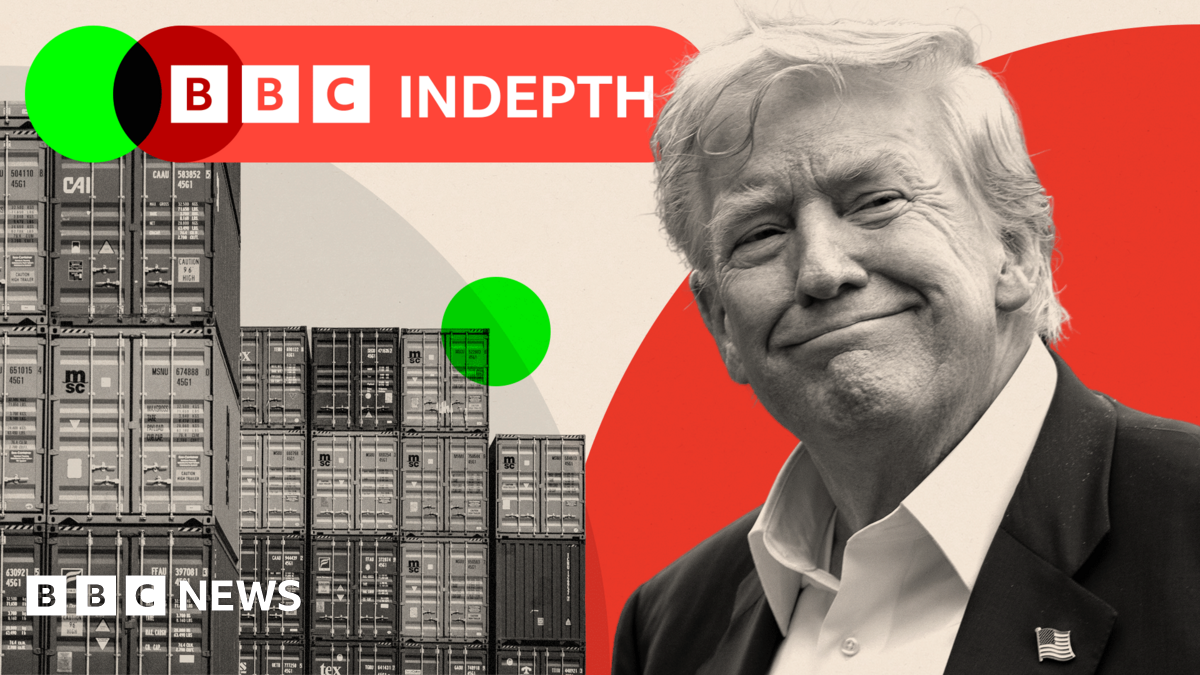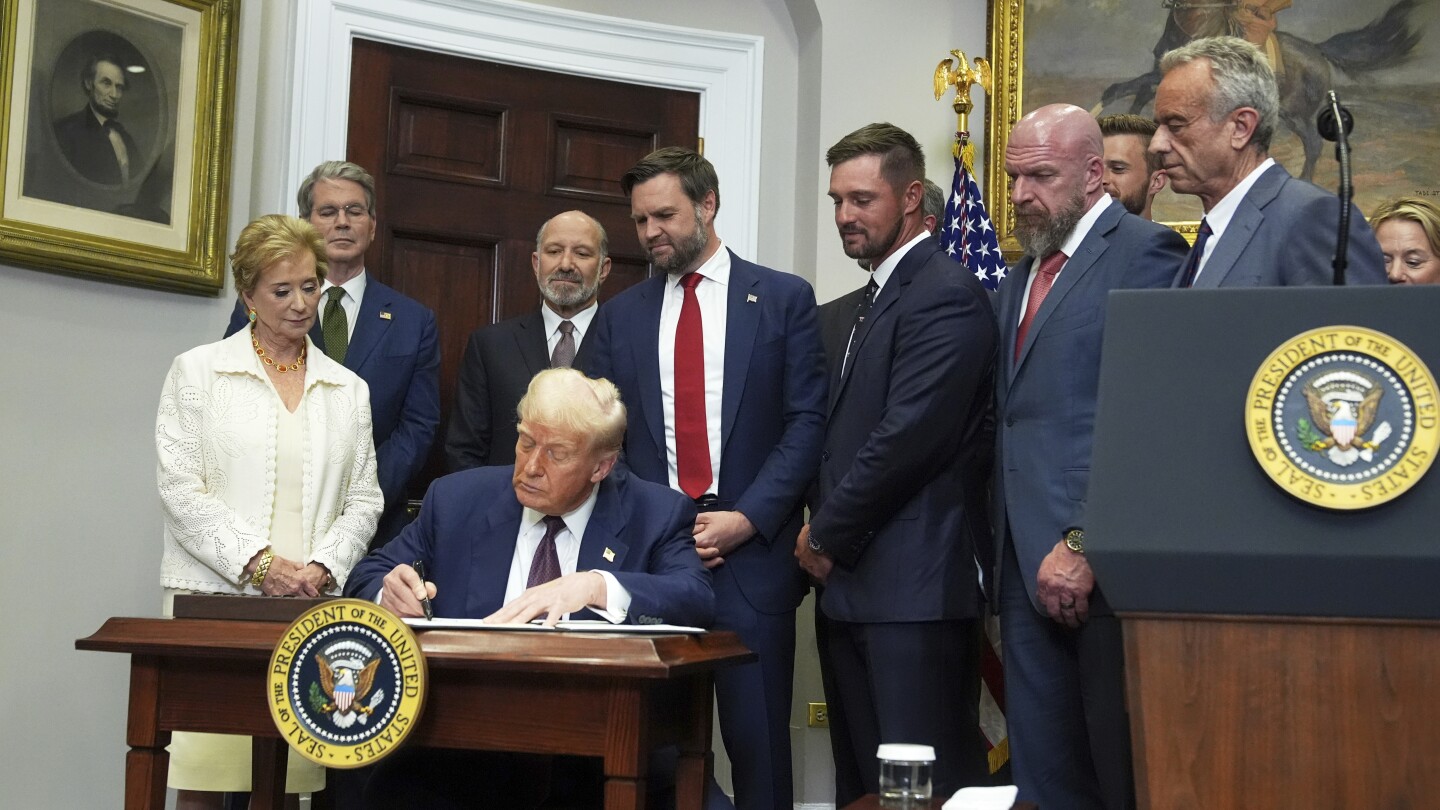Global Trade Wars: Did Trump's Tariff Strategy Achieve Its Goals?

Welcome to your ultimate source for breaking news, trending updates, and in-depth stories from around the world. Whether it's politics, technology, entertainment, sports, or lifestyle, we bring you real-time updates that keep you informed and ahead of the curve.
Our team works tirelessly to ensure you never miss a moment. From the latest developments in global events to the most talked-about topics on social media, our news platform is designed to deliver accurate and timely information, all in one place.
Stay in the know and join thousands of readers who trust us for reliable, up-to-date content. Explore our expertly curated articles and dive deeper into the stories that matter to you. Visit Best Website now and be part of the conversation. Don't miss out on the headlines that shape our world!
Table of Contents
Global Trade Wars: Did Trump's Tariff Strategy Achieve its Goals?
The Trump administration's imposition of tariffs on imported goods, a hallmark of its "America First" policy, sparked a global trade war with significant repercussions. While the stated goals were to protect American industries and jobs, and reduce the trade deficit, the actual impact remains a subject of intense debate among economists and policymakers. Did the strategy succeed? The answer, unfortunately, is complex and far from clear-cut.
The Rationale Behind the Tariffs:
The core argument behind Trump's tariff strategy was simple: by imposing tariffs on imported goods, primarily from China, the US would incentivize domestic production, create more American jobs, and ultimately reduce the trade deficit. This protectionist approach aimed to counter what the administration perceived as unfair trade practices, including intellectual property theft and subsidized industries. Key targets included steel, aluminum, and a vast array of Chinese goods.
The Economic Fallout:
The immediate impact was a significant increase in prices for consumers. Tariffs, essentially taxes on imported goods, are ultimately passed on to the consumer. Industries reliant on imported materials faced higher costs, hindering competitiveness and potentially leading to job losses in some sectors, directly contradicting the stated goal.
Furthermore, the retaliatory tariffs imposed by other countries, particularly China, harmed American exporters. Agricultural products, for example, faced significant challenges in the global market, impacting farmers and rural communities. This triggered a ripple effect across the global economy, slowing down international trade and contributing to global uncertainty.
Did it Reduce the Trade Deficit?
One of the key metrics used to assess the success of the tariffs was the trade deficit. While there were some fluctuations, the overall effect on the trade deficit was minimal. The trade deficit with China did decrease slightly in some periods, but this was often attributed to other factors, such as shifts in global demand and supply chains rather than the tariffs themselves.
Job Creation and Industrial Revitalization:
The promise of significant job creation in the targeted sectors also fell short of expectations. While some industries might have seen short-term gains, the overall effect on job creation was largely negligible, and the long-term impacts remain uncertain. The increased costs associated with tariffs offset any potential benefits, limiting the growth of affected industries.
Long-Term Consequences:
The Trump-era trade war had lasting consequences beyond the immediate economic fallout. It disrupted established global supply chains, increased uncertainty for businesses, and fostered a climate of trade protectionism that continues to impact international relations. The World Trade Organization (WTO) faced increased challenges in resolving trade disputes, further complicating global trade governance.
Conclusion: A Mixed Bag at Best
In conclusion, assessing the success of Trump's tariff strategy is a nuanced undertaking. While some proponents might point to minor decreases in the trade deficit with specific countries, the overall evidence suggests that the strategy fell short of its stated goals. The negative consequences, including higher consumer prices, harm to American exporters, and disruption of global supply chains, outweigh any potential benefits. The long-term impacts of this protectionist approach are still unfolding and continue to be a subject of intense debate and research. The experience serves as a cautionary tale regarding the complexities of trade policy and the unintended consequences of protectionist measures.
Further Reading:
Disclaimer: This article provides an overview of the complexities surrounding Trump's tariff strategy and its impact. It is not intended to provide financial or investment advice. Always conduct thorough research and consult with qualified professionals before making any decisions related to trade or investment.

Thank you for visiting our website, your trusted source for the latest updates and in-depth coverage on Global Trade Wars: Did Trump's Tariff Strategy Achieve Its Goals?. We're committed to keeping you informed with timely and accurate information to meet your curiosity and needs.
If you have any questions, suggestions, or feedback, we'd love to hear from you. Your insights are valuable to us and help us improve to serve you better. Feel free to reach out through our contact page.
Don't forget to bookmark our website and check back regularly for the latest headlines and trending topics. See you next time, and thank you for being part of our growing community!
Featured Posts
-
 Dexter Resurrection Recap A Deep Dive Into Performance Anxiety
Aug 03, 2025
Dexter Resurrection Recap A Deep Dive Into Performance Anxiety
Aug 03, 2025 -
 Cyberpunk 2077 Performance Analyzed Switch 2 Xbox Series S Ps 4 Ps 4 Pro Benchmarks
Aug 03, 2025
Cyberpunk 2077 Performance Analyzed Switch 2 Xbox Series S Ps 4 Ps 4 Pro Benchmarks
Aug 03, 2025 -
 Hungarian Grand Prix Follow Live Practice And Qualifying Updates
Aug 03, 2025
Hungarian Grand Prix Follow Live Practice And Qualifying Updates
Aug 03, 2025 -
 Raiders Scrimmage Analysis Promising Plays And Areas For Improvement
Aug 03, 2025
Raiders Scrimmage Analysis Promising Plays And Areas For Improvement
Aug 03, 2025 -
 Trumps Revival Of The Presidential Fitness Test A Return To Schoolyard Standards
Aug 03, 2025
Trumps Revival Of The Presidential Fitness Test A Return To Schoolyard Standards
Aug 03, 2025
